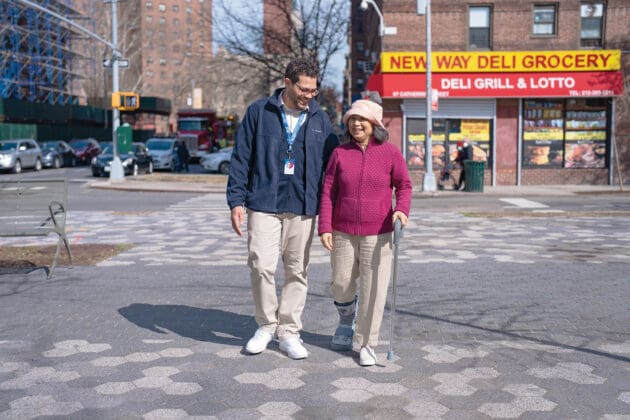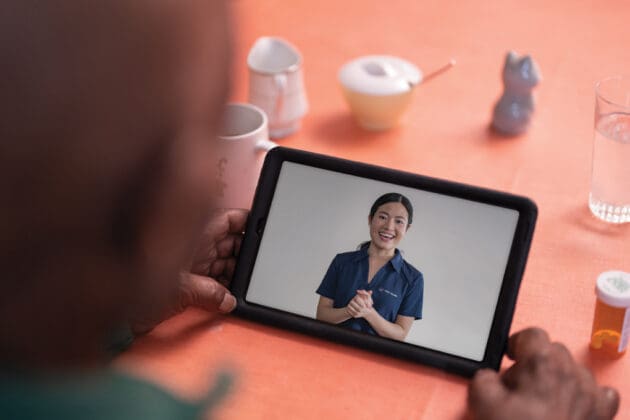
This article is sponsored by VNS Health. In this Voices article, Josie Aquino, Director, Product Management, VNS Health talks about how VNS Health is using data and analytics to improve end-of-life care. She explains why VNS Health is bullish toward concerns about a hospice carve-in, and she also shares an outlook on the VBID demonstration’s extension through 2030. Additionally, she discusses VNS Health’s outcomes-driven approach to end-of-life care, and how they are helping other organizations employ a similar approach.
Hospice News: What career experiences do you most draw from in your role today?
Josie Aquino: With 20+ years in healthcare, I have embraced a range of roles, each providing unique and invaluable experiences that have shaped my career and that I draw upon in my role today. I have channeled my passion for working with underserved communities, beginning as a licensed social worker for a large hospital system, where I experienced firsthand the disparities in healthcare access and limitations in delivering whole-person care. I then transitioned into managed care, starting in the field and ultimately assuming leadership roles, managing teams, and developing programs that aimed to optimize care delivery.
Just prior to taking on my current role, I had an enlightening experience at a health tech start-up. Working in such a dynamic and innovative environment helped me appreciate the role of technology in transforming healthcare delivery, particularly in terms of enhancing accessibility and efficiency. Now, as a product manager, I channel these experiences towards improving outcomes during the most critical moments of patients’ lives, an aspect of care often overlooked despite its importance. This role merges my past roles beautifully, enabling me to utilize my skills in a meaningful way.
My commitment extends beyond individual patient care to working with organizations to make a larger impact on improving outcomes. I am a strong advocate for a compassionate and integrated approach to care, that strives to address systemic health disparities and bridge gaps in health equity.
There are concerns about a hospice carve-in. Why is VNS Health bullish on it?
VNS Health Health Plan has been participating in the VBID hospice component demonstration since 2021. This participation has allowed us to integrate our experience as both a Medicare Advantage (MA) plan and hospice provider, developing a care model that fundamentally aligns with CMS’ broad policy goals. Our organization holds a bullish stance on a hospice carve-in into Medicare Advantage (MA) plans, viewing it as a ‘triple win’ scenario with beneficial outcomes for members, providers, and MA plans alike.
For members, a carve-in ensures a seamless care experience that spans their entire health journey. From palliative care to hospice, members are bolstered by access to high-quality providers and enhanced benefit flexibilities. Receiving care within the same reimbursement system promotes continuity and minimizes fragmentation, making it easier for families navigating different aspect of care. With improved coordination across the care continuum, members’ needs can be more effectively prioritized, aligning treatments with their values and preferences, and enhance their quality of life.
For providers, a carve-in opens doors to innovative collaboration with MA health plans. By fostering stronger relationships with MA plans, providers gain access to more resources, data, and opportunities for continuous quality improvement. This collaboration can help optimize care delivery, expand member access to services, and improving the quality of care provided.
For Medicare Advantage plans, a carve-in facilitates better care coordination and oversight. By coordinating a member’s entire care journey– from primary care to end-of-life care– MA plans can reduce fragmentation and ensure more consistent and comprehensive care for its members. Our perspective on a carve-in stems from VNS Health’s performance, which contributes to our firm belief that collaboration and coordinated care significantly improve outcomes for our members, doing so in a fiscally responsible manner.
How is VNS Health using data/analytics to improve end-of-life care?
Data-driven algorithms are powerful tools for identifying individuals at elevated risk for medical conditions, including mortality, or who might benefit from targeted services such as palliative care or hospice. Our Business Intelligence and Analytics team developed a 12-month mortality predictive model, which relies on thousands of data points derived from medical and pharmaceutical claims information, in addition to clinical indicators recognized by advanced practice clinicians, to identify members who fit specific risk profiles.
We use these predictive models to assess and identify members with various risk factors and health indicators, throughout their disease trajectory. This early intervention helps to quickly match members to the appropriate care for their specific circumstances. Early identification also enables timely discussions regarding end-of-life preferences, empowering providers to deliver more personalized, patient-center care by tailoring services that meet the individual needs and wishes of members and their families.
Our team routinely evaluates our predictive models against alternative models, fine-tuning them using historical data.
We leverage this information to examine utilization patterns and to identify potential triggers or health declines that might result in hospital admissions. This approach helps guide preventive care, enabling members to stay in the comfort of their homes as much as possible, and avoiding distressing, and often unnecessary, hospital visits. We also use data to benchmark our performance against other health plans, providers, and national standards to continually measure and improve the effectiveness of our programs and interventions.
What have your outcomes been so far?
Early performance outcomes for VNS Health’s first year (2021) participation in the VBID hospice demonstration provide compelling evidence for the positive impacts a hospice carve-in can achieve. We have seen an increase in palliative care program enrollment as well as hospice elections year-over-year. We have seen an increase in members transitioning from palliative care to hospice, indicating that our efforts to create a seamless continuum of care are being realized. This has been accompanied by an increase in hospice length of stay, reflecting the ability of our model to ensure that end-of-life care services are introduced at the right time.
Another encouraging outcome has been an increase in the proportion of decedents who pass away on hospice compared to those not receiving hospice care. This suggests that a greater number of our members are benefiting from the holistic and compassionate support hospice care offers in their final stages of life.
Lastly, our data shows a decrease in the total cost of care in the last 12 months of life. The tangible cost-effectiveness of our care model not only highlights its efficiency, but also supports our positive outlook on the significant potential that a hospice carve-in can have to enhance end-of-life care for members.
How are you using that experience to help other organizations and how is that approach unique?
Drawing from our expertise and experience, as well as alignment with CMS’s carve-in goals and objectives, we view the VBID hospice demonstration as an opportunity to achieve key outcomes. These include enhancing the beneficiary experience, increasing hospice access, leveraging palliative care to facilitate transitions to hospice, addressing health equity gaps, promoting better coordination and a seamless continuum of care, eliminating duplications, and driving innovative solutions to reduce escalating end-of-life costs.
In collaboration with Compassus, a national hospice and palliative care organization, we are now extending this expertise to help other MA plans across the country create efficiencies. The VNS Health Management Services Organization is working alongside Compassus to enable MA plans to implement and manage hospice and palliative care programs for their members effectively, further extending our organization’s impact to more members in need. Together, we are delivering our combined expertise, and providing administrative, operational, and clinical components to enhance the way care is coordinated and delivered during the final phase of life. We recognize the importance of moving care upstream, focusing on engaging members in palliative care early and easing transitions to hospice. This approach increases hospice length of stay and decreases unnecessary utilization, making our model not just beneficial for members, but also cost-effective. This holds whether an MA plan participates in the VBID hospice demonstration or not.
End-of-life care is a complex and specialized area. We acknowledge that some MA health plans may lack the expertise required to effectively manage hospice services, thus making participation in the VBID hospice demonstration seem daunting. There may also be concerns about resource constraints, the financial implications of managing the hospice benefit, or uncertainty about the future of the demonstration.
Looking to the future/ What are your thoughts about the VBID demonstration’s extension through 2030?
Extending the demonstration reaffirms CMS’ commitment to value-based care and their belief in the potential benefit of this model. There is now a longer timeline to gather more comprehensive data and insights about the impact of integrating hospice care into MA plans. The extension provides more time for MA plans to participate in the demonstration and hospice providers to work more closely with health plans. It also represents a potential turning point for the way hospice care is delivered and financed in the U.S. If the demonstration continues to show positive results over this extended period, it may influence future policy changes, potentially leading to the permanent integration of hospice care into Medicare Advantage. If successful, it could culminate in that ‘triple win’ scenario, benefiting the healthcare providers, members, and the healthcare system as a whole.
In a couple of words, finish this sentence: “In the hospice industry, 2023 has been defined by…”
…integration and growth.


